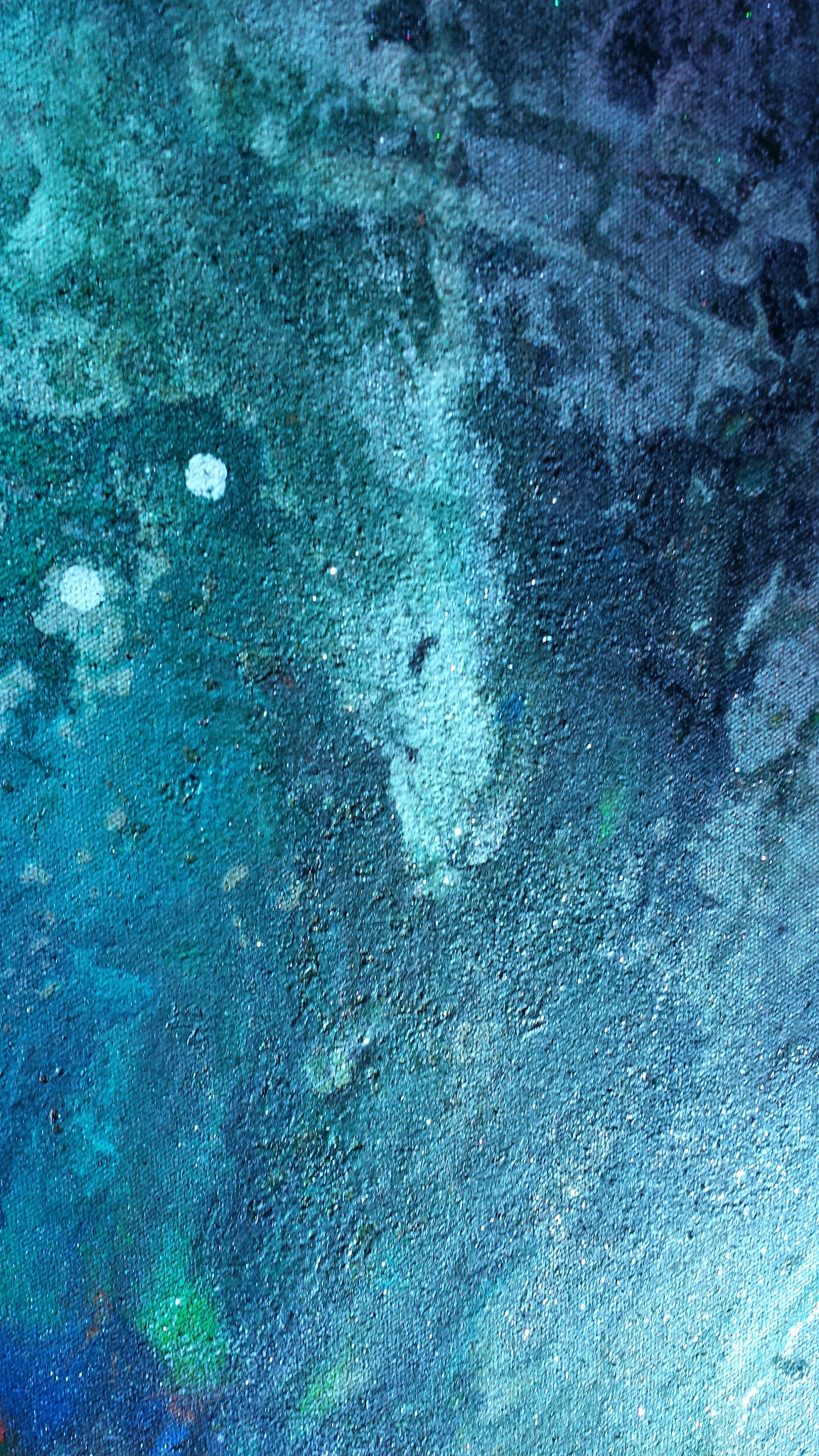In 1951, Robert Rauschenberg exhibited a series of canvasses painted white all over, in part to test how we might think about the simple play of gallery lights and shadow on a surface. Roberto Adrian Rodriguez, in his recent solo show “Air Affair” at BLUE1647 in Pilsen, took that same historical interest in the insubstantial qualities of a painting, smashed it together with extensive 3-D graffiti practice, piped it through an airbrush, and mixed it with some actual grit.Over long sessions with each of his canvasses, between repeated applications of thin washes of paint, he blended in sparkling powders and mineral dusts, adjusting both the paint and its basic material qualities as it dried. “Air Affair” produces images that resemble the ethereal fogs seen through a Hubble Space Telescope by tinkering with optics itself.
Separating a painting like “Ephemerality of Euphoria” from any of number of Rodriguez’s other paintings is something of a technical problem from a writerly standpoint: one painting’s description sounds a lot like the next. “Euphoria” is set on a black field flecked with lighter paint—resembling stars—with a central explosion of matter in its foreground. Some of that paint fans out, nebulae-like. Other paint has been layered with opaque metal powders, creating Rorschach-style blots. There are no legible strokes; the painter’s typical “fingerprint” has been suppressed by his preference for the airbrush. The mineral powder has even fused each individual layer of paint into one surface. The painting looks something like a print, while still being rough and varied and deliciously tactile up close.
This is true for “Ephemerality,” but also for the horizontal canvas stretched to its left, the round canvas to the right. The series of six coupled canvasses hung in succession along the room’s far wall. Granted, the latter paintings, for example, have busier foregrounds—more yonic, more aquatic than galactic, and entirely unafraid of pink. Some of his paintings leverage thick, heavy acrylic impasto. Some smaller canvasses have spray-can motifs that would be perfectly comfortable chilling out on a street-side mural. But, for the most part, the same compositional principles apply across his show.
This isn’t to say that Rodriguez is interested in getting rid of his presence as an author, by abandoning the intimate identifying mark made between the painter’s hand and his brush. “Euphoria,” by his own confession, is a rigorously coded meditation on a former relationship. Rather, it’s worth taking his appeal to abstraction, his seriality, or his seeming decision to forgo token informative labels on opening night as a bid to refocus attention onto his technique and not his psychology. It was more fun to watch Rodriguez walk through a sheaf of his formative, experimental test-runs, than attempt to diagnose each painting’s explicit content through some kind of pseudoscience.
Much of Rodriguez’s technique hinges on the careful management of chance. He has to minimalize it, in some cases: taking extensive pains to track the thicknesses of his paints, lest they clog and disable his tools as he’s working. His paint, as it exits the airbrush as a vapor, is subject to physical, gaseous probabilities. Each stroke is mediated by a level of air, as it descends to the surface, which will literally diffuse his ideas. Whenever he applies granular materials like mica, each shake or toss he makes will disperse the substance in a predictable but imprecise pattern. He can tolerably calculate the result he’ll achieve, but never find himself certain as to how the sheer stuff will behave.
Rodriguez lit his works with raking, off-blue lamps and posed the question of air’s intervening quality not just to himself, as the creator, but also to the viewer. In something of a paradox, the blue light activates Rodriguez’s earthly minerals, mobilizing the painting and causing it to shimmer fluidly and airily. The reflective properties of the elements he blended into and laid over the paint allow the painting to take on a hundred different aspects, since glints of light will appear at many new and different points while traversing the 180 degrees of vision the canvas accommodates.
Take away all the light, and the painting becomes a technology for moving beyond ordinary vision in a gallery; among Rodriguez’s mineral media are phosphorescent compounds that glow in the dark. The phosphorescent elements in his painting assert a kind of independence beyond the beholder: they will faintly glow, and actively make themselves visible to us, where the human eye is otherwise powerless to perceive fine shapes, color, and forms. The likeness of Rodriguez’s paintings to the births of stars or deaths of galaxies is not a coincidence. Science exploits physical tricks and quirks to bring those vistas back through the black to Earth, just as “Air Affair’s” unique methodologies threaten to defy lightlessness itself.



